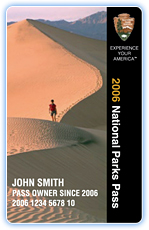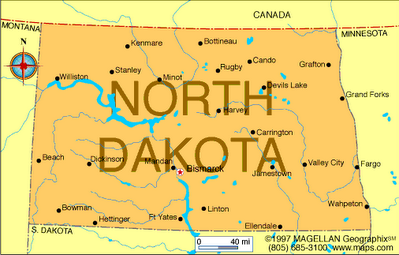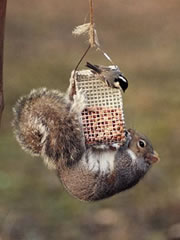Congratulations to Beverly Robertson of Hewiit, N.J.! You won this month's fiction contest and can choose two recently published bird books from the
WildBird bookshelves.

If you want to earn that opportunity, then write an original 500-word short story about birds, birding or birders that includes a setting, a character or characters, a conflict and a resolution. Also, the birds cannot be anthropomorphized.
Kudos to this edition's participants! You made it especially difficult for the judges to pick a winner.
Please submit stories for the January edition by
Jan. 3.
Now, for your consideration: "Orange Aid" by Beverly Robertson.
JoJo opened his eyes a slit at the tapping on the window. He saw only a shadow on the pane and closed his eyes again. He was feeling much worse this time.
It was so unfair. He was young and strong. "Why me?" he wondered.
The tapping came again. He turned his head away, ignoring it. At the doctor's office last week, she said to think about sharks. Well, like that was going to help!
It was the C word: cancer. It was bad. He hadn’t known. Not one to go to doctors, he hadn’t really thought about it. His sister was a nurse, and when he finally told her he had a little something going on, she threw a fit. The process had started. The chemo had started.
He was feeling much weaker. In fact, he was exhausted. The last round of chemo almost killed him. His mouth had sores, and food tasted and smelled strange. His hair was all but gone; even his beard was thin.
The doctor wanted him to try and visualize the chemo attacking and eating the cancer cells, but he wasn’t much of a fish person. He didn’t even like sharks. "Jaws" still freaked him out. The whole idea of eating put him off.
Again the tap on the window, more incessant this time. JoJo opened his eyes and saw his brother Dave’s finger on the outside of the bottom pane.
Tap. Tap. Point. Tap. Tap. Tap. Point.
JoJo followed the pointing finger with his eyes. There in the big spruce next to the patio was a Red-tailed Hawk. Dave knew he loved birds. JoJo could see the hawk from where he lay: big, fierce, powerful, free. It thrilled and depressed him. Would he ever be able to get outside again?
As he lay there contemplating his future, he saw a flash of color. He turned his head slowly and painfully to the left. There it was again! He squinted. What was that? He carefully lifted the binoculars off the covers.
A large black crow flew past with five bright orange orioles chasing and dive bombing it. They didn’t like the crow. They didn’t want it anywhere near their territory. In all of the years of birdwatching, he had never seen orioles chasing a crow. He had seen lots of other small birds chase crows...but orioles?
He watched for a long time as the orioles chased and harassed the crow. It flew this way and that, banking and twisting. The bright orange flashes against the black were seared on his eyelids as when he closed his eyes.
The cancer loomed black and ominous; the chemo, bright orange. He visualized all those bright orioles harassing the black thing that was cancer. This might work.
His mom poked her head around the door with a tray. He smiled. Maybe he could eat a little jello -- orange jello.
 The story needs to contains four ingredients: a setting, a character or characters, a conflict and a resolution. I'd like to add a rule for our purposes: The birds will not be anthropomorphized. Also, please provide the story in a Word document or in the body of the e-mail.
The story needs to contains four ingredients: a setting, a character or characters, a conflict and a resolution. I'd like to add a rule for our purposes: The birds will not be anthropomorphized. Also, please provide the story in a Word document or in the body of the e-mail.














